A Baghdadi Woman of Virtue, from Bombay to London
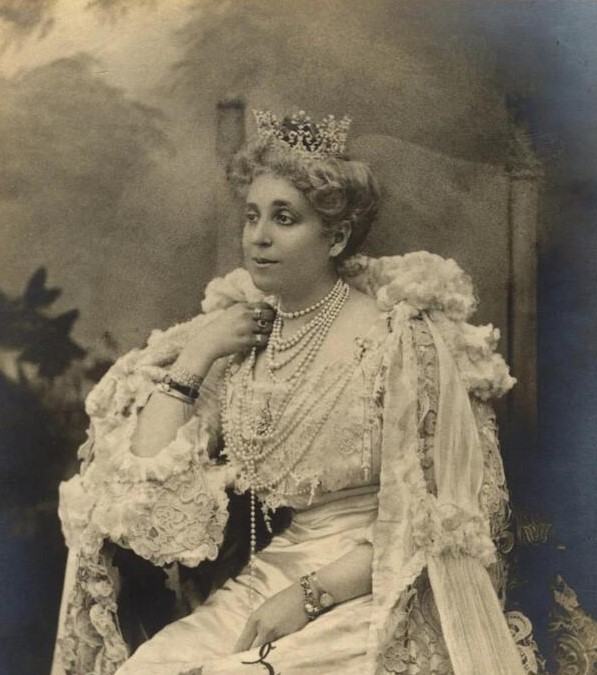
In Honor of Marian Scheuer Sofaer, an attorney, editor, co-producer of an award-winning documentary, and philanthropist, who spearheads an array of projects on Jewish life in Asia, from Cochini Jewish women’s songs to Kerala restoration projects and exhibitions, as well as the book, Synagogues of India, which was presented to Indian PM Narendra Modi during his 2017 state visit to Israel
Click here to dedicate a future issue in honor or memory of a loved one

The American Sephardi Federation’s Sephardi Ideas Monthly (SIM) is a continuing series of essays and interviews from the rich, multi-dimensional world of Sephardi thought and culture that is delivered to your inbox every month
Flora Sassoon (1859 – 1936) was a remarkable human being by any standard of excellence. Born in Bombay (today, Mumbai) to a Baghdadi Jewish family with branches stretching from south and east Asia back to London, as a teenager Flora was already fluent in multiple languages and cultures, and she grew up to be a devoutly observant, internationally respected businesswoman and philanthropist with an abiding interest in Jewish learning. If we explore Jewish history across the 19th and 20th centuries on the lookout for rooted-cosmopolitan Jews who knew how to join piety, traditional learning, scientific knowledge, and worldly engagement into an integrated whole, Flora Sassoon would be at the top of the list.
This month, Sephardi Ideas Monthly explores Flora Sassoon’s many-sided life and personality by giving the stage to Dr. Sasha Goldstein-Sabbah, assistant professor of Middle Eastern Studies at the University of Groningen in The Netherlands and author of numerous publications, including Baghdadi Jewish Networks in the Age of Nationalism (Brill, 2021). Goldstein-Sabbah is currently writing a book on Sassoon as part of a grant from the Dutch Research Council (NWO) for a project called Optimizing Orientalism: Rethinking the Global Jewish Elite, and she generously set aside time to thoughtfully answer SIM’s questions about Sassoon.
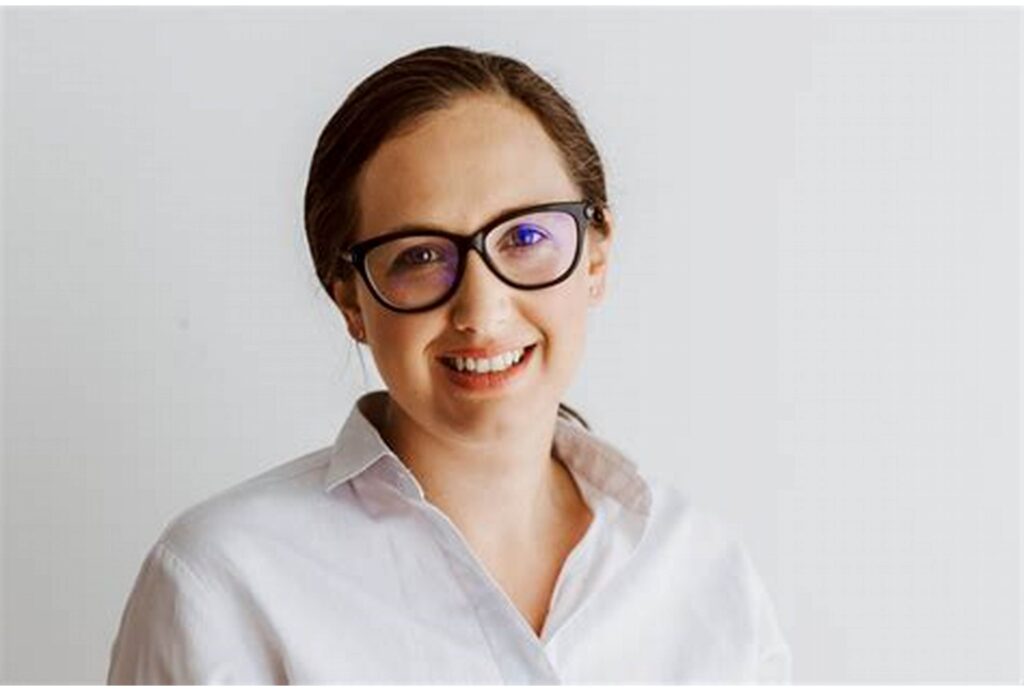
(Photo courtesy of the author)
Sephardi Ideas Monthly: Before we take a deep dive into the life and times of this remarkable person, Flora Sassoon, please set the stage for us. How did you find yourself studying Sassoon’s life?
Sasha Goldstein-Sabbah: In my research project, I explore the agency of Middle Eastern and North African Jewry in order to rethink the connection between transnational religious networks and empire building. I believe that demonstrating the centrality and agency of Jewish communities located outside of Europe challenges assumptions about the center and the periphery within the British Empire and also within the Jewish world in the late nineteenth and early twentieth century.
The project focuses on the Jews who built these trans-imperial networks, and Flora Sassoon is truly a paradigm of this phenomenon, particularly within the context of the British Empire. Furthermore, Flora is a bit of an outlier compared to other individuals in these networks both as a woman and as a Torah observant Jew. Thus, she is particularly interesting to study because she challenges stereotypes about the global Jewish elite within a context of modernity and emancipation. Serendipitously, around the same time that I found out that I got the research grant, I was given access to Flora’s archives which led me to decide that one of the main outputs of my research project would be a biography on Flora Sassoon. Although more and more excellent works are published each year on Middle Eastern and North African Jewry, I believe that women’s history in these communities is woefully under researched, thus I hope my book project will contribute to elevating the voices of Jewish women from this area of the world.
SIM: One of the most fascinating aspects of Flora Sassoon’s personality was the breadth and depth of her Jewish knowledge and commitment to traditional Jewish practice. How did a Jewish woman born and raised in south Asia and educated in a Catholic school grow up to be such a learned and pious Jew?
SGS: I don’t think it’s surprising that a Jewish woman born into the Baghdadi community on the Indian subcontinent in the 19th century would be both educated and a pious Jew. The community was close knit and religious practice was central to her upbringing. As for her education, she wasn’t only educated in Catholic schools but she had private tutors who taught her Hebrew, Jewish history, and halakha. This aspect of her education is something I hope to further research, but it isn’t unique. Many Jewish girls from privileged backgrounds across the Middle East and North Africa attended Catholic schools and then received private tuition for Jewish subjects. Education was a sign of status and wealth. It was also considered essential within a context of Victorian values for women to be educated so as to be suitable wives and mothers. Thus given the means of Flora’s family I would have been surprised had she not been highly educated.
I can’t speak as to why she in particular was so pious in comparison to her contemporaries, although perhaps by the time the biography is complete I will have more information about that. However, it is true that Judaism, and with that both learning and observance, were extremely important to her, and this is consistent throughout her life. This is particularly interesting because so many Sassoons of her generation would become more secular, and even marry non-Jews. What we do know is that Judaism was important to both Flora and her husband, and this is something that united them, and is one reason that they were thought to be such a suitable match despite their age difference.
SIM: Flora Sassoon corresponded with two scholars who served as Chief Rabbis in the State of Israel, Rabbi Yitzhak Nissim and Rabbi Yitzhak Herzog, who even eulogized her. What can you tell us about her relationships with these rabbinic leaders? What other relationships, in person and via correspondence, did she maintain with Jewish leaders of her time?
SGS: One of the many reasons that Flora was remarkable is that she seems to have been able to strike her own very specific balance between being a thoroughly modern woman, and a Torah observant Jew. Naturally both of these statements need to be put in a context of the late nineteenth and early twentieth century when Judaism was in tremendous flux. As such she was a staunch supporter of Yeshiva education both in the Middle East and North Africa (including Ottoman/Mandate Palestine) and perhaps more surprising even in Eastern Europe.
Her personal archive is replete with letters of thanks from Yeshivot across the globe for her generosity. Thus I think it is understandable why she would be in contact with someone like Rabbi Nissim or eulogized by Rabbi Herzog, as she very much epitomized the Jewish elite who supported Torah learning and was able to strike a balance between modernity and Torah observance. This is particularly important as she was active in a time when most of the Jewish elite were patrons of more secularized Jewish organizations like the Alliance Israelite Universelle or the Anglo-Jewish Association, whereas Flora was particularly interested in religious education, especially later in life. As to the Rabbis with whom she corresponded, I think the most important is the Ben Ish Hai. They corresponded extensively over several years, and I believe she truly looked to him for guidance about women’s Jewish education, as he was a staunch supporter of women’s literacy. That said, much of their correspondence relates to her philanthropic giving. One area I am researching is her role in the dissemination of Kanun al-Nisa (Hukei haNashim /Laws for Women) which was published in 1906 and widely read by Baghdadi women both within Iraq and the satellite communities of the Indian Subcontinent and East Asia.
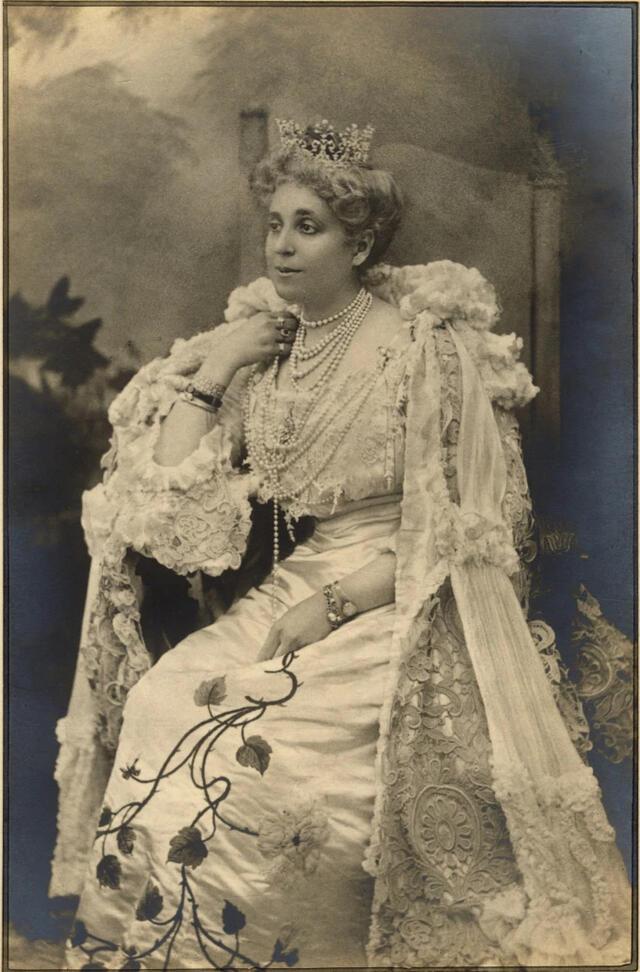
(Photo courtesy of the Jewish Women’s Archive)
SIM: Flora Sassoon was also known for her remarkable business acumen. What were her main accomplishments in business, and how do you account for her success in a field that would seem, at first glance, to require a very different skill set than passionate interest in Yeshiva education and traditional learning?
SGS: Firstly, as I already alluded to, Flora was a naturally intelligent woman who by virtue of her position in society as a Sassoon was highly educated, a fortuitous combination. Perhaps it was the mixture of secular and religious education which cultivated the intellectual curiosity necessary to run such a large and complex business. Unsurprisingly, it was highly unusual for a woman in his period to be given the opportunity to run such a large business and of course she is given this opportunity due to the death of her husband in 1894, leaving no suitable male members of family to run the business in Bombay at that time. Thus I would simply say that she rose to the occasion splendidly at a critical moment in her family’s history.
As for her accomplishments, these are discussed at length in Joseph Sassoon’s wonderful book The Sassoons: The Great Merchants and the Making of an Empire. In short summary, some of her main accomplishments as discussed in the volume include reinvigorating the leadership of the family business through her attention to detail and close oversight of the daily workings of the business, having a keen knack for international tax law to optimize profit, and following current events to make shrewd business decisions.
SIM: Even as she assumed a leadership role in business, Flora Sassoon observed the traditional practices of Jewish observance. What efforts would she make to ensure that she would be able to observe halakha wherever she happened to be?
SGS: Flora spent most of her life in Jewish spaces. Places like Bombay, London, and Baghdad all had dynamic functioning Jewish communities with regular minyanim and easy access to kosher food. However on a more anecdotal level, it is said the Flora always traveled with enough men to ensure a minyan, traveled with a shochet, and brought her own food to events. To date, I haven’t found archival evidence of this but it is all plausible and something I am keeping an eye out for in her personal correspondence.
SIM: What can you tell us about Flora Sassoon’s philanthropic work, from developing a cholera vaccine and promoting its use, to supporting the “anti-purdah” movement?
SGS: Flora’s philanthropic work is very important in her life and should be divided between her contributions to the Jewish community, and to larger issues in Indian society. As I mentioned previously much of her philanthropy within the Jewish community centered around support of Yeshivot, speaking to the value she placed on traditional Jewish learning. In addition to supporting Yeshivot she also made donations to the Bais Yaacov movement in Eastern Europe, which is indicative of her broad knowledge of intellectual projects within the Jewish world during her lifetime.
However she also valued secular knowledge to improve society and had her sense of noblesse oblige. The two projects you mention very much relate to her role as an important philanthropic benefactor in Bombay. In case of cholera she financially supported Waldemar Haffkine’s research on cholera, and was a vocal advocate for vaccination at a time when many were skeptical of its efficacy or simply afraid to be vaccinated.
Flora’s support of the anti-purdah movement is really interesting when we consider that she remained a Torah observant Jew her entire life, but was extremely present within Indian society and notably did not cover her hair in public after her marriage. The anti-purdah movement, which combatted social mores whereby upper-class Indian women were confined to the home or veiled in public after marriage, very much aligned with her values as a Baghdadi Jewish woman. Diplomatic archival records from around the turn of the century suggest that upper class Jewish women in Baghdad regularly appeared at social events with their husbands, although this wasn’t the case for Muslim women. This converges with certain ideas of some Sephardic rabbis in the period who articulated opinions that married women needn’t cover their hair in public as long as they were in a society where women with uncovered hair would still be perceived as modest. Thus I would say that her view that upper class women could play an important role in society was very much in line with the halakhic ethos that she espoused.
I would also like to underline that her worldview did not necessarily align with contemporary ideas about feminism, but were very much a product of her time. I think her position in regard to women’s roles in society is very much a reflection of Victorian views of a woman’s place in society which still centered the life of a woman around her husband and children, but opened up considerable opportunities for women by stressing education and philanthropy to make them ideal wives and mothers.
I am currently working through the documents regarding both Flora’s exchanges with Waldemar Haffkine and about her role in the anti-purdah movement, but to learn more you will need to read my book when it comes out.
SIM: We will do so enthusiastically, and we already invite you back for another conversation after the book’s publication! Changing gears, what was Flora Sassoon’s attitude towards the Zionist movement?
SGS: To date, my research has found that Flora says very little about the Zionist movement. Firstly, for a large part of her life Zionism was a relatively peripheral idea in the Jewish world, and not one generally supported by the Jewish elite in the Middle East and North Africa who were, overall, concerned with cementing their position in local societies within a context of Empire and colonization. It is important to remember that Flora was born one year before Theodor Herzl’s birth. Secondly, throughout her life Flora lived within the British empire which provided her family and her community tremendous socio-economic opportunities. From my research so far, it does not appear that Zionism was a central issue to her and Zionism is not a central interest in her philanthropic endeavors. However this does not mean that she was ‘anti-Zionist’, I would venture to guess that she perceived Zionism as one intellectual project among many during her lifetime. She was certainly supportive of Jewish life in Ottoman and later Mandate Palestine, however most of her philanthropy in the region was to support yeshivot, not secular projects, which could frustrate the Zionist movement officials. When she did travel to Jerusalem in 1925, the focus on her trip seems to be of a spiritual nature opposed to a political venture.
In Elizabeth Imber’s fantastic article “A Late Imperial Elite Jewish Politics: Baghdadi Jews in British India and the Political Horizons of Empire and Nation” she writes about the complex position of Baghdadi Jews in India who were fighting to be recognized as white within a colonial hierarchy, and thus Zionism could be perceived as undermining this stance, although it was certainly discussed with great enthusiasm in the Jewish press in India. Flora’s daughter Rachel, who resided in Calcutta marrying into the Ezra family, seems to have been initially skeptical about hosting Zionist emissaries but grew to be an enthusiastic Zionist in the 1930s which makes sense in a context of growing nationalist movements on the Indian subcontinent and the Middle East combined with the rise of Nazism in Europe. Thus it is plausible that Flora too grew closer to Zionism in her later years. Finally, it’s important to note that the connection to the land of Israel was very strong for Flora, and although she was initially buried in London, her children arranged for her to be reinterred in 1947 on the Mount of Olives in Jerusalem.
SIM: Finally, how did you first learn about Flora Sassoon, and what aspect of her life and career speaks most deeply to you?
SGS: I first learned about Flora while I was writing my doctoral dissertation which eventually became my first book Baghdadi Jewish Networks in the Age of Nationalism (Brill, 2021) in which I spent considerable time researching the connections between Baghdadi Jews in Iraq with the Baghdadi Jewish diaspora. Naturally with such a subject, one couldn’t possibly miss Flora’s name as she could be considered the matriarch of the Baghdadi community in Bombay. Beyond telling the story of an exceptional woman in her own right, the biography aims to embed Flora’s life within larger themes within Jewish and British Imperial history. Specifically, through the life of Flora, I will address topics such as Baghdadi religious responses to modernity, transnational Jewish philanthropy, and British Imperial trade networks and the roles women played in each of these phenomena.
~~~~~~~
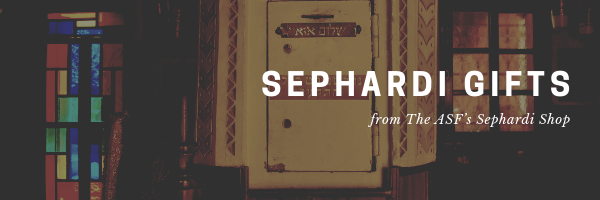
By Oded Halahmy
Like countless New Yorkers who arrived from distant lands, ASF’s Board Member Oded Halahmy has a rich personal history of exile, migration and travels. Born in the old city of Baghdad in 1938, the artist came from a family of Orthodox Jews with deep roots in ancient Babylonian culture. Iraqi Cooking: Exile Is Home is a tasty exploration of Oded’s roots accompanied by several pieces of original poetry, art, sculptures and jewelry.
The Wolf of Baghdad (Memoir of a lost homeland)
By Carol Isaacs
In the 1940s a third of Baghdad’s population was Jewish. Within a decade nearly all 150,000 had been expelled, killed or had escaped. This graphic memoir of a lost homeland is a wordless narrative by an author homesick for a home she has never visited.
Transported by the power of music to her ancestral home in the old Jewish quarter of Baghdad, the author encounters its ghost-like inhabitants who are revealed as long-gone family members. As she explores the city, journeying through their memories and her imagination, she at first sees successful integration, and cultural and social cohesion. Then the mood turns darker with the fading of this ancient community’s fortunes.
This beautiful wordless narrative is illuminated by the words and portraits of her family, a brief history of Baghdadi Jews and of the making of this work. Says Isaacs: ‘The Finns have a word, kaukokaipuu, which means a feeling of homesickness for a place you’ve never been to. I’ve been living in two places all my life; the England I was born in, and the lost world of my Iraqi-Jewish family’s roots.’
~~~~~~~
Upcoming Events or Opportunities
American Sephardi Federation and Kulanu presents:
An ASF New York Premiere:
Between the Stone and the Flower
Film screening followed by Q&A with Rabbi Eli Abadie and Genie Milgrom, and a light reception
Between the Stone and the Flower follows the journey of Genie Milgrom, a direct descendant of the Pre-Inquisition Jews of Spain in her quest to uncover her hidden Jewish lineage.
Raised Roman Catholic in Havana, Cuba she made a return to Judaism that shook her family and friends to the core. Her search led her to Medieval archives in several countries and to untangling the web of secrecy that her ancestrs created as protection during very dark times in Europe.
This documentary was screened to sold out theatres around the world since its world premiere in Miami Jewish Film Festival earlier this year.
Monday, 1 July at 7:00PM EST
Sign-up Now!
Tickets: $10
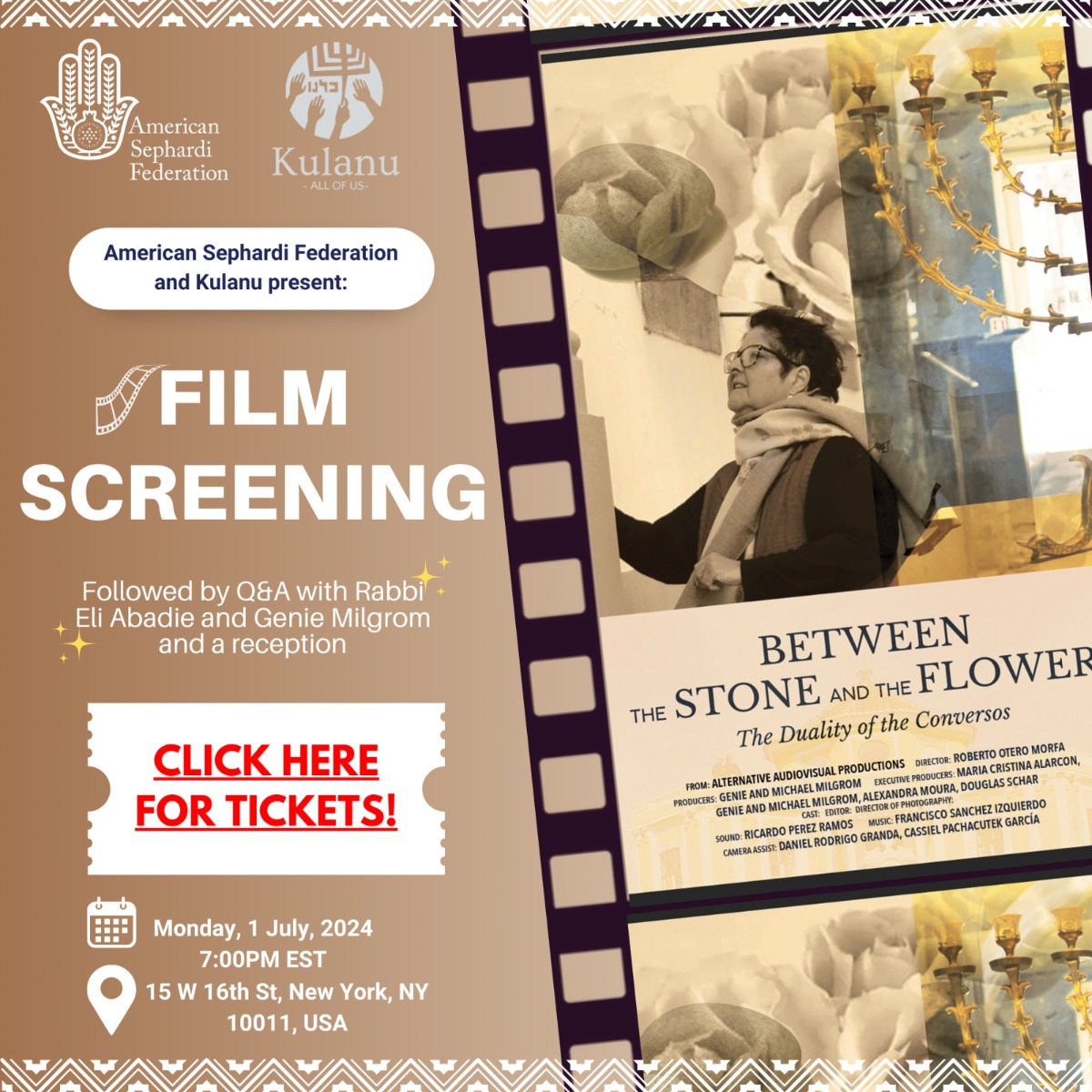
Director Bio:
Roberto Otero, Director of Alternative Audiovisual is a veteran in film production. He directs his successful cooking show in Miami, “Con Sabor a Miami.” He has filmed numerous productions in the Bahamas and Peru, including documentaries for Cable and the Ministry of Education. He is a graduate of the Instituto Cubano de Arte e Industria Cinematográfica (ICAIC), Cuba as well as the Escuela Nacional de Cine Radio y Televisión.
~~~~~~~
American Sephardi Federation presents:
The Trial of Adolf Eichmann
Adapted on stage by David Serero
Inspired by actual events, this powerful drama takes audiences on a haunting journey through one of the most infamous trials in history, examining the depths of human evil and the quest for justice.
Don’t miss this compelling and thought-provoking theatrical experience as the world premiere of “The Trial of Adolf Eichmann” opens in July 2024 at the Center for Jewish History, inviting audiences to reflect on the lessons of history and the enduring struggle for justice and reconciliation.
21 July at 7:00PM EST
22 July at 8:00PM EST (Premiere)
23 July at 3:00PM EST
25 July at 8:00PM EST
@the Center for Jewish History
Sign-up Now!
Tickets: $26-$36
For questions and more details please call 855.688.7277 (ext.1)

The play revolves around the trial of Adolf Eichmann, one of the principal architects of the Holocaust, who orchestrated the systematic murder of millions of Jews during World War II. Set in Jerusalem in 1961, the story follows the trial of Eichmann, a former Nazi officer captured by Israeli agents in Argentina and brought to Israel to face justice. As the courtroom drama unfolds, audiences are confronted with the moral dilemmas faced by the prosecution, defense, and the international community. Eichmann’s unapologetic defense, which hinges on his claim of “just following orders,” sparks intense debates about responsibility, collaboration, and the nature of evil. The play delves into the legal and ethical complexities of the trial, exploring how the pursuit of justice can intersect with the need for closure, healing, and reconciliation in the aftermath of unspeakable atrocities. David Serero’s masterful writing combines historical accuracy and dramatic tension to create a riveting theatrical experience. “The Trial of Adolf Eichmann” challenges its audience to grapple with profound questions about humanity’s capacity for cruelty and the enduring quest for accountability in the face of unimaginable horror. With a talented ensemble cast, David Serero’s direction, and meticulous attention to detail, this Off-Broadway production promises to be a thought-provoking and emotionally charged exploration of a pivotal historical moment. “The Trial of Adolf Eichmann” is a timely reminder of the importance of remembering the past and seeking justice, even when the wounds are deep and the scars are still fresh.
~~~~~~~
The American Sephardi Federation presents:
“The Golden Age of the Jews of Alandalus” | “La Edad de Oro de los judíos de Alandalús”
On View in the Paul S. And Sylvia Steinberg Great Hall
through June 2024
@ the Center for Jewish History

The Jewish community of Alandalús gave the world extraordinary thinkers like Maimonides, diplomats like Ibn Shaprut, and poets like Ibn Gabirol and Judah Halevi, whose wisdom, works, and accomplishments resonate through the ages. 820 years after his death, the RAMBAM’s contributions to medicine, philosophy, diplomacy, and Jewish law continue to inspire wonder and influence till today. Across the Mediterranean in Fustat (Cairo) about two hundred thousand documents accumulated in the Ben Ezra Synagogue’s Genizah—a room or grave where obsolete sacred documents are respectfully discarded—over the course of nearly a millennium.
The geographical location of Egypt, a natural bridge between the Islamic East and Christian West, made it possible for many of these documents to be of Andalusian origin. This exhibition, curated by the University of Granada Professor José Martínez Delgado, takes us on a journey from the origins of this important community to its exodus and extinction in the XIX century. Although subsequently scattered all over the world, Sepharadim have maintained connections to their past by perpetuating traditions, the Ladino (Judeo-Spanish) language, and exemplifying a seriously Jewish yet cosmopolitan worldview.
~~~~~~~
The American Sephardi Federation presents:
Convergence: Arabic, Hebrew, and Persian Calligraphy in Conversation
Featuring the multilingual art of Ruben Shimonov Convergence creates a visual world where Hebrew, Arabic, and Persian languages interact with, and speak to, one another; a world where stylized letters and words dance together on the page; a world where cultures, religions, communities, and philosophies intersect.
Juxtaposing cognates from these ancient West Asian languages, artist Ruben Shimonov encourages the viewer to explore the deep-rooted connections between these tongues, as well as the multilayered and transnational identity of the artist himself.
On View in the Leon Levy Gallery
through June 2024
@ the Center for Jewish History

~~~~~~~
The American Sephardi Federation and Mimouna Association’s Rebuilding Our Homes Project present:
Re-Creation: Judaica by Moroccan Muslim Artisans
Explore the exhibition of Judeo-Moroccan art, Moroccan Judaica, cultural and religious objects, including Menorot, Mezuzot, Yads, Shabbat Candleholders, Seder Plates, Hallah Covers, and much more.
On View through June 2024
@ the Center for Jewish History

As Moroccan Jewish populations largely left the mellahs (Jewish quarters) in the latter half of the 20th century, there was a danger that not only designs but even the traditional artisanal techniques needed to create them would be lost. Passed down from one artisan to another and perfected over time, these designs and techniques. ranging from vibrant patterns to intricate metalwork and soulful wood carvings, are expressions of Moroccanity and reflect the individual character of each city. The materials and craftsmanship of Rabat are different than Fez, and Essaouira is distinct from both.
Mimouna Association and the American Sephardi Federation’s Rebuilding Our Homes Project, a multi-year USAID-supported New Partnerships Initiative, brought three notable experts-Ms. Zhor Rehihil, Ms. Deborah Koenigsberger Gutierrez, and Ms. Meryem Ghandi to train Moroccan Muslim artisans in the history of Judeo-Moroccan art and guided them in re-creating Moroccan Judaica, which encompasses a diverse array of cultural and religious objects, including Menorot, Mezuzot, Yads, Shabbat Candleholders, Seder Plates, Hallah Covers, and much more.